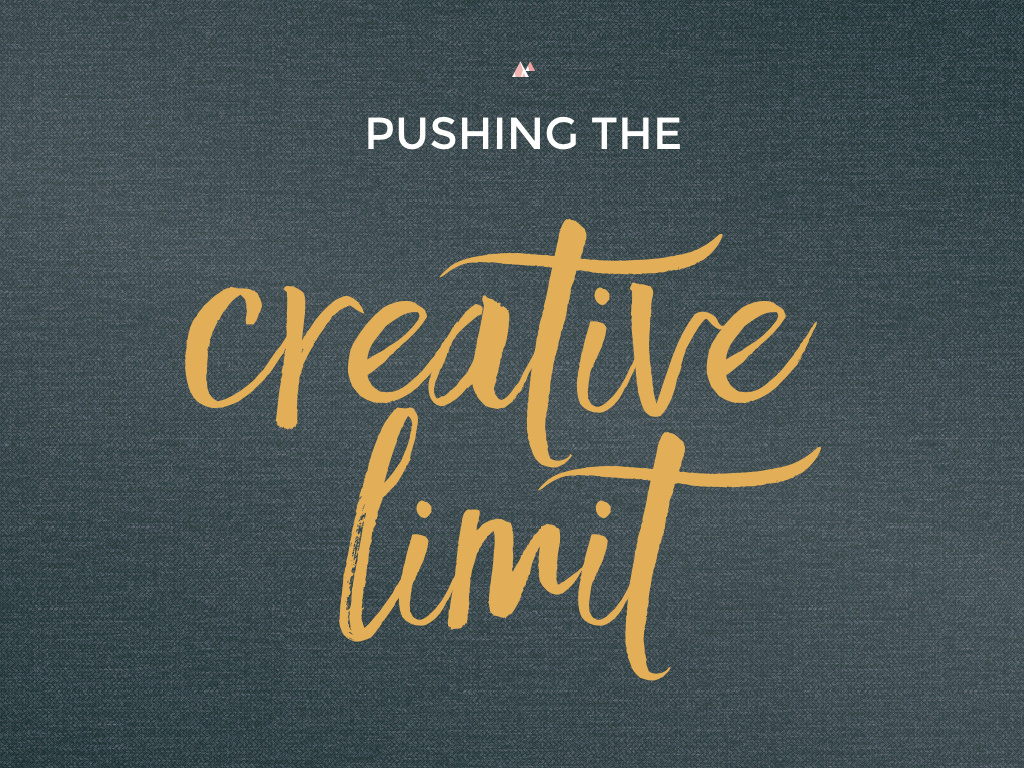This post, adapted from a lightning talk that Sara Cannon gave at WordCamp US, is about creativity and the ever present push to continually find that spark or that idea. We feel that this doesn't just apply to design, but to other mediums as well.
We want what we create to be unique and original. We want to have the spark that connects us to a unique reality. Something special. But most importantly, we want it to be memorable.

This is what makes it good. A brand is designed well if it’s memorable and lasting. This concept goes for other mediums as well - a song that you love to hear, a book that you read, a meal that you enjoyed, an art piece that moved you. Memory gives meaning.

We want to create memorable work. And our creativity is one piece of the puzzle.
Some people describe creativity as an idea, others describe it as a sudden realization while in the shower.
As creators, we want to let creativity drive us to a place of originality, uniqueness, and memorable presence.

Step 1: Don't believe the myths.
There are many myths surrounding creativity. These are the negative things we tell ourselves that inhibit finding that spark or idea.
One myth is "I'm just not a creative person" - you don't have to be eccentric aunt Rhonda to be creative. Everyone has creativity.

In design it is important to have a process and stick to it. When we use the same process, our brains can relax and hone in on ideas that are floating out there.
Whether it is napkin sketching or going straight to the computer, when you have a defined process, you leave room for creativity to come in at any point. It avoids bad chaos and leaves room for the good.

What works is worth stealing. In your research, you might find that there are certain designs and experiences that you love - and that they really work. Good ideas are worth stealing.

We all know that Picasso’s art was original and unique and unprecedented at the time, but he built on the shoulders of others. I'm not saying take the New York Times and slap your logo on it, but I am saying that there are great base concepts out there that we should use and then expand upon - to create something even better and memorable.

We should steal learned behaviors. These are basics that aren't new. One example of a learned behavior is scrolling. Embrace the fact that people have learned to scroll and don't be scared to put things below the fold. Other learned behaviors can be gesture based: swiping in slideshows, etc.
 But I realły want to touch a bit on micro-interactions. We should all be utilizing them. What is a micro-interaction? It's a small action that triggers a response. Pull to refresh for example. There are many known micro interactions that just make sense to utilize and steal. That way we're not reinventing the wheel and confusing users.
But I realły want to touch a bit on micro-interactions. We should all be utilizing them. What is a micro-interaction? It's a small action that triggers a response. Pull to refresh for example. There are many known micro interactions that just make sense to utilize and steal. That way we're not reinventing the wheel and confusing users.

Work with and not against limitations. Sometimes people think that constraints stifle creativity, but in actuality, they can be freeing. If the brand you're working with has detailed guidelines, you don't have to worry too much about the design details. This opens you up to find creative ways to improve and work within the constraints - making your product even better.

All of what we talked about so far, and all the research and methods that you're using - this will give you design intelligence. Design intelligence is the foundation and the groundwork for creativity. Even if you’re a developer, I encourage you to look around and start crafting your own design intelligence. It’ll help you have a deeper understanding of what you’re building.
The more you research, analyze, and think about your product, the more you're crafting your own design intelligence and in turn your creativity will come more naturally.

Share with others! This makes our industry thrive! Make an icon set and put it up for free download. Or get on GitHub and put up your front end code. Blog about your micro-interactions. Just think for a second how many resources you’ve utilized that is free like WordPress and think about how you can give back as well.
All these things will help you push your creative limit and make your product even better.
To read the full unadapted talk presented at WordCamp NYC 2015, please visit Medium. To view the lightning version of this talk given at WordCamp US 2015, please visit WordPress.tv.
